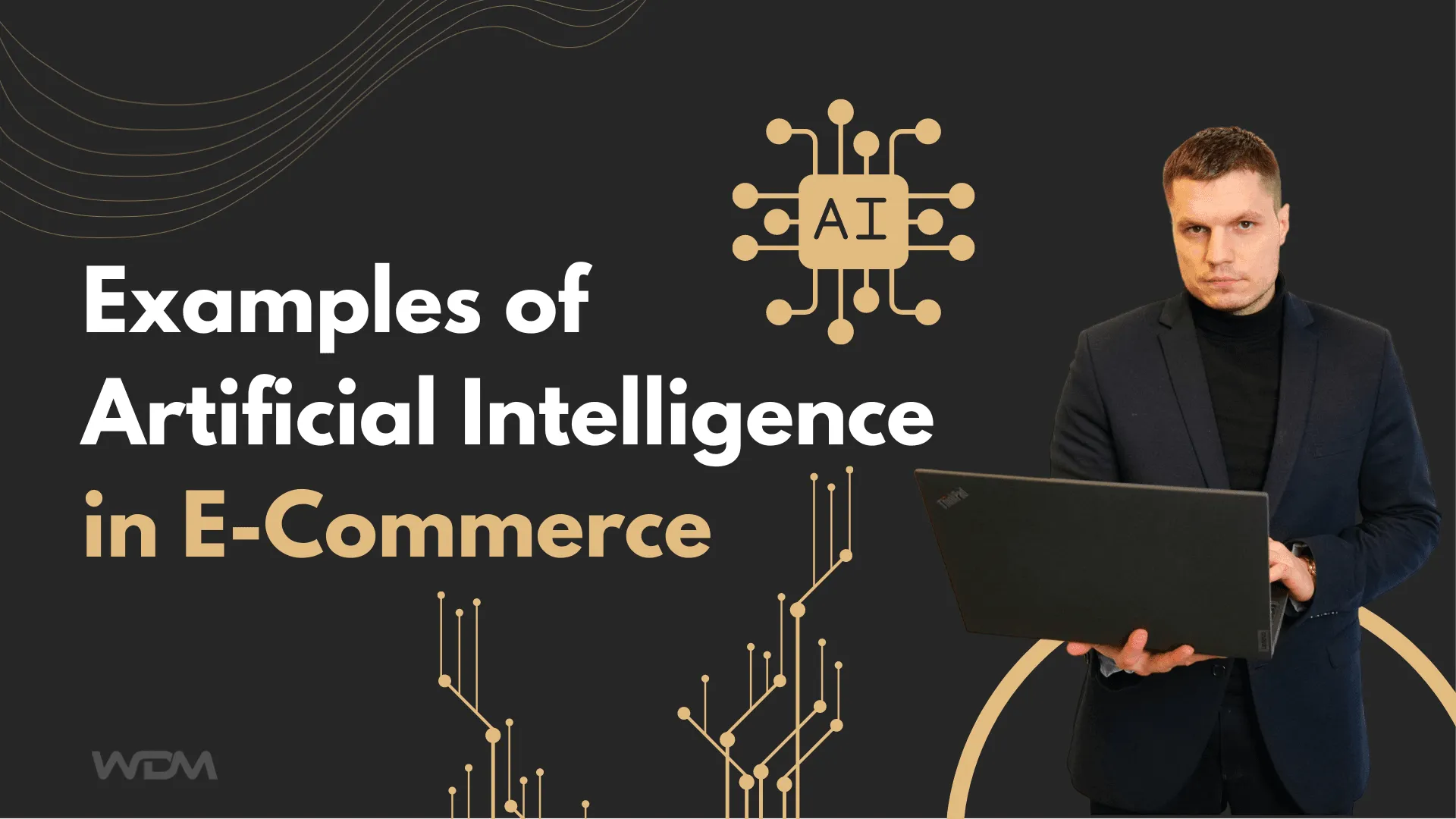10 Best Real-World Examples of Artificial Intelligence in E-Commerce






Artificial Intelligence (AI) has revolutionized the way businesses operate across various industries, and e-commerce is no exception.
In this blog post, we'll explore 10 real-world examples of Artificial Intelligence is transforming e-commerce, highlighting innovative applications that are reshaping the way businesses engage with customers, streamline operations, and stay ahead of the competition. Let's explore further examples of artificial intelligence in action within the e-commerce sector.
Examples of Artificial Intelligence in E-Commerce
Customer Segmentation and Targeting: Target
Target leverages AI-powered customer segmentation tools to analyze vast amounts of customer data. By utilizing sophisticated algorithms, Target identifies distinct customer segments based on demographics, behavior, and preferences. This enables Target to personalize marketing campaigns and promotions, delivering targeted offers to specific customer segments and improving overall conversion rates.
Automated Product Descriptions: Walmart
Walmart utilizes advanced natural language generation (NLG) technology to automate the process of generating product descriptions. By leveraging NLG algorithms, Walmart can create compelling and accurate product descriptions at scale. This not only saves time and resources but also ensures consistency and quality across product listings, enhancing the overall shopping experience for customers.
Fraud Detection and Prevention in User Reviews: TripAdvisor
TripAdvisor employs AI-powered fraud detection systems to maintain the integrity of its user review platform. These systems analyze user-generated content, such as reviews and ratings, to detect and prevent fraudulent or fake submissions. By utilizing sophisticated algorithms, TripAdvisor can identify suspicious activities, such as fake reviews or spam, and take appropriate action to ensure the authenticity and reliability of user-generated content.
Supply Chain Optimization: JD.com
JD.com utilizes AI-driven supply chain optimization tools to streamline its inventory management, logistics, and fulfillment processes. By leveraging AI algorithms, JD.com can predict demand, optimize routing, and minimize shipping costs. This enables JD.com to improve efficiency, reduce operational costs, and enhance customer satisfaction by ensuring timely delivery of orders.
Voice Search Optimization: Alibaba
Alibaba focuses on voice search optimization to enhance the discoverability of its e-commerce platform. By incorporating natural language processing (NLP) algorithms and voice search optimization techniques, Alibaba ensures that its products and services are easily accessible via voice commands. This enables Alibaba to tap into the growing market of voice-enabled devices and provide a seamless shopping experience for its customers.
Personalized Product Recommendations: Amazon
Amazon utilizes sophisticated recommendation algorithms powered by AI to analyze customer behavior, browsing history, and purchase patterns. By leveraging AI, Amazon delivers highly personalized product recommendations to its customers, increasing the likelihood of conversion and driving sales. This level of personalization enhances the overall shopping experience for Amazon customers, leading to increased customer satisfaction and loyalty.
Chatbots for Customer Support: ASOS
ASOS employs AI-powered chatbots to provide instant assistance to its customers. These chatbots utilize natural language processing (NLP) algorithms to understand and respond to customer queries in real time. By leveraging AI, ASOS can offer round-the-clock customer support, improve response times, and enhance the overall shopping experience for its customers.
Visual Search and Image Recognition: Pinterest
Pinterest Lens is a prime example of visual search technology powered by AI. Pinterest Lens allows users to take a photo of an item and find similar products on the platform. By utilizing image recognition algorithms, Pinterest enables users to discover products they see in the real world, driving engagement and increasing conversion rates on the platform.
Dynamic Pricing Optimization: Uber
Uber utilizes dynamic pricing algorithms powered by AI to optimize fares in real time. By analyzing demand, traffic conditions, and other factors, Uber adjusts prices dynamically to maximize revenue and balance supply and demand. This dynamic pricing strategy enables Uber to provide affordable rides during off-peak hours and incentivizes drivers to meet increased demand during peak hours.
Virtual Try-On and Augmented Reality: Warby Parker
Warby Parker offers virtual try-on experiences powered by augmented reality (AR) technology. By leveraging AR, Warby Parker enables customers to try on glasses virtually before making a purchase. This innovative feature reduces the need for in-person try-ons, increases confidence in purchase decisions, and reduces the likelihood of returns, ultimately enhancing the overall shopping experience for Warby Parker customers.
Final Thoughts
These real-world examples of artificial intelligence in e-commerce illustrate the transformative power of AI in revolutionizing the e-commerce landscape.
As technology continues to evolve, e-commerce businesses must embrace AI-driven solutions to stay competitive and meet the evolving needs of consumers in the digital era. By leveraging AI technologies effectively, businesses can unlock new opportunities, enhance the shopping experience for customers, and drive sustainable growth in an increasingly competitive marketplace.
Related Posts:
Best AI Chatbots For Ecommerce: Boost User Experience
AI Chatbots For Ecommerce: Helpful to Customers and Useful for Store
AI in Ecommerce: Make your Business more efficient

